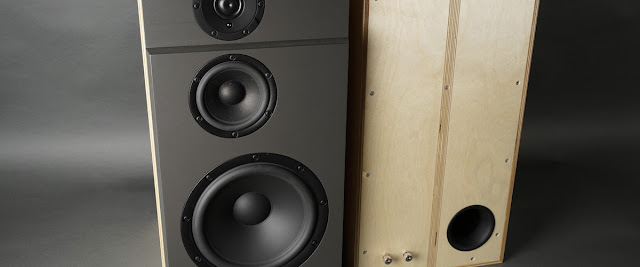The Ultimate Integrate, revisit 1.
It is hard to describe how pleased I am with the Ultimate Integrate. It does exactly what I want it to do and it sounds and looks great too. Overall a success but with a couple of minor annoyances and therefor this revisit. The fist and foremost was the input selection key bounce. I attribute it to the buttons but the CMOS based design could have been more solid. My initial plan was to make a new PCB with only the relay switching components and another with the switch logics. I could then just switch out the logic board if it didn't perform as expected. But what if the new logic board proved insufficient? How many boards would I have to build before I would be 100% satisfied?
The guys at work once again pointed out the obvious, solve it with a PIC. They even offered to build a surface mount PCB with the PIC for me. But I was stubborn as usual and wanted to keep everything through hole and as analog as possible. This goes back to the main reason I picked up electronics as a hobby again. It was my way to get away from my daily grind of systems engineering with systems getting more and more digital and harder to debug and repair. I wanted my private gear to be simple and straight forward, easy to fault check and repair. I guess it was all a pipe dream since I already incorporated a DSP and a Class-D amplifier into the Ultimate Integrate. So why resist a PIC?
This summer I more or less caved in. I wanted to test the idea to interface the relay based switching through GPIO. My initial plan was to figure out how efficient software would be to fight the really bad key bounce situation. I did not use a PIC to figure it out, I used an Arduino Uno out of convenience. The problem was solved in less than 30 minutes and I was so impressed by the result that I started to ask myself what else a micro controller could be used for?
The next issue was the VU-meters. They look great but grow old fairly quick. I think it is because they don't dance around enough on low volume and it makes them boring. This is not really an issue, it is just me making excuses for another projekt, right?
So I got the Arduino interfacing the input switching PCB. The way I did it was to desolder all the switch logic components (i.e. CD4044 & Co.) leaving the relays and support components. I modded the board slightly and interfaced the ULN2003A directly through the GPIO on the Arduino Uno board. I also got loads of memory and CPU cycles to spare. What else could the Arduino be used for? Something more eye-catching than the boring VU-meters? Stay tuned...






